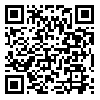BibTeX | RIS | EndNote | Medlars | ProCite | Reference Manager | RefWorks
Send citation to:
URL: http://irje.tums.ac.ir/article-1-5237-en.html
Background & Objectives : The identification of risk factors and their interactions is important in medical studies. The aim of this study was to identify the interaction of risk factors of cerebral palsy in 1-6 years-old children with classification regression methods.
Methods : The data of this cross-sectional study which was conducted on 225 children aged 1-6 years was collected during 2008- 2009. Classification regression methods (classification and regression tree (CART), adapting boosting (AdaBoost), bagging, and C4.5 algorithm) were used to identify interactions between risk factors. Data analysis was carried out with R3.0.1 software.
Results : The identified interactions of the factors by a) the AdaBoost method were (consanguinity: sex, previous pregnancies: vaginal delivery, consanguinity: sex: preterm, history of the disease: preterm: asphyxia, consanguinity: sex: asphyxia, history of the disease: sex: small size relative to gestational age, neonatal infection: asphyxia: small size relative to gestational age, history of the disease: sex: asphyxia, preterm: asphyxia: vaginal delivery) by b) the bagging method were (consanguinity: asphyxia, consanguinity: preterm: asphyxia), by c) the C4.5 algorithm were (asphyxia: preterm, asphyxia: consanguinity: history of the disease: preterm), and by d) the CART method were (asphyxia: consanguinity). The sensitivity and specificity of the AdaBoost method was better than other methods (0.941±0.029 and 0.951±0.030, respectively).
Conclusion : The AdaBoost method could better recognize and model potential interactions between risk factors of cerebral palsy.
Received: 2014/11/22 | Accepted: 2014/11/22 | Published: 2014/11/22
| Rights and permissions | |
 |
This work is licensed under a Creative Commons Attribution-NonCommercial 4.0 International License. |





